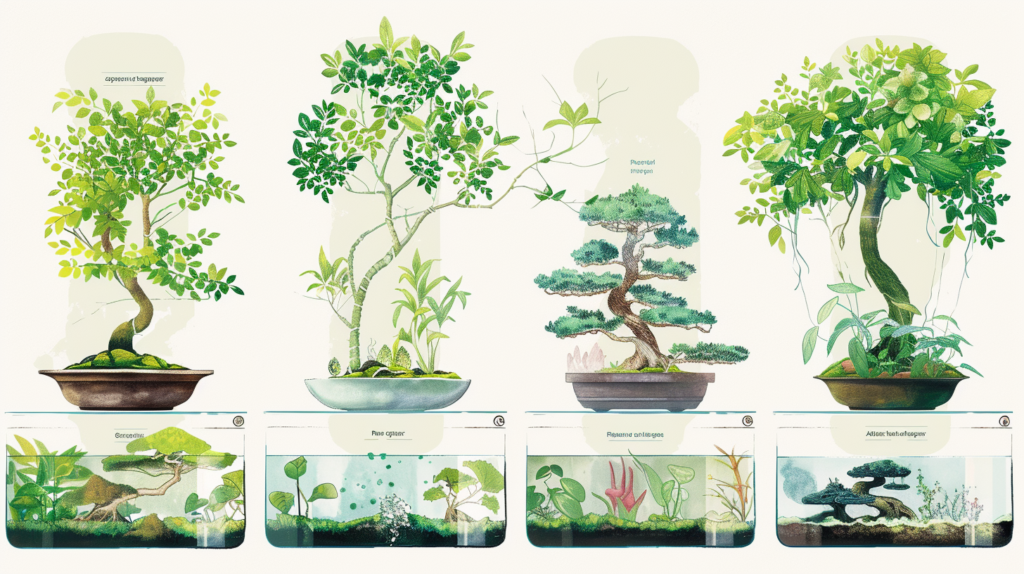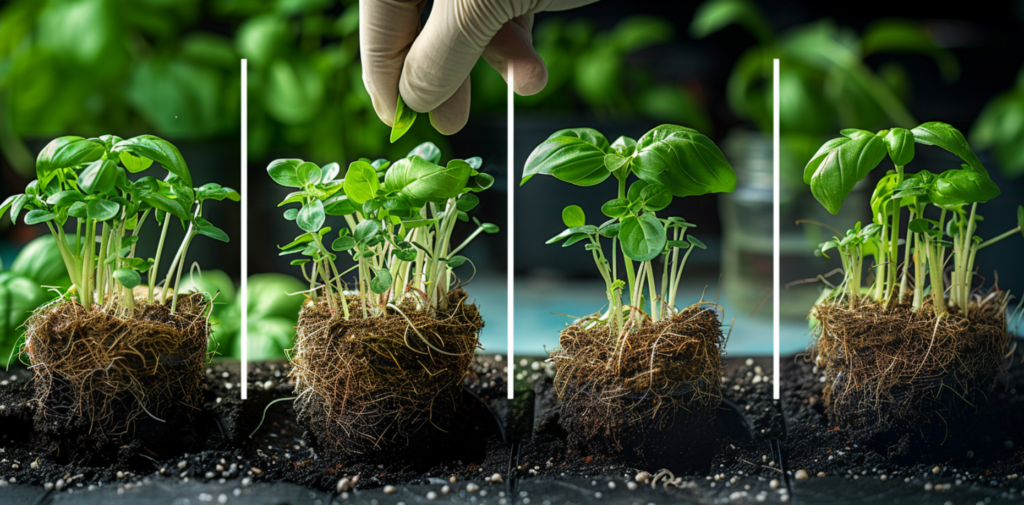Introduction

Hydroponic gardening, a method of growing plants without soil, has gained significant popularity in recent years. This innovative approach offers numerous advantages, such as efficient water usage, faster growth rates, and increased yields. To fully harness the potential of your hydroponic setup, it is essential to select the appropriate plants. In this article, we will explore the top 10 plants that excel in hydroponic systems, ensuring you can reap abundant harvests and enjoy fresh, nutritious produce all year round.
Overview of Hydroponic Gardening and Its Benefits
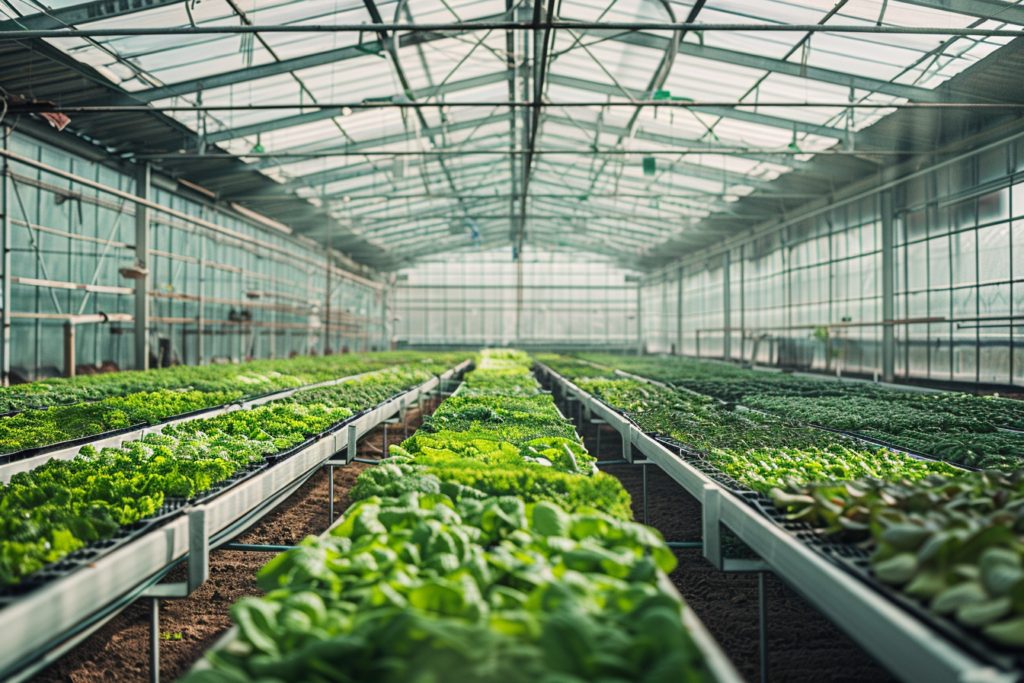
Hydroponic gardening is a groundbreaking technique for cultivating plants without traditional soil. Instead, plants are nurtured in a nutrient-rich water solution, allowing their roots direct access to essential minerals and oxygen. This innovative method presents numerous advantages over conventional soil-based gardening practices.
One of the key benefits of hydroponics is its efficient water utilization. By recirculating water within a closed system, there is minimal wastage, making it an eco-friendly and sustainable choice. Additionally, hydroponic systems require less space, enabling growers to produce a significant amount of crops in a compact area, particularly beneficial for urban or indoor environments.
Another notable advantage is the accelerated growth rate and increased yields facilitated by precise control over nutrient levels, pH balance, and environmental conditions. This precision allows plants to flourish faster and yield more abundant harvests, making hydroponic gardening appealing to both commercial producers and avid home gardeners.
Furthermore, hydroponic setups are less vulnerable to soil-borne pests and diseases, reducing the reliance on harsh pesticides and fostering a healthier growing atmosphere. The controlled environment also supports year-round cultivation, ensuring a steady supply of fresh produce regardless of the season.
In conclusion, hydroponic gardening provides a sustainable, efficient, and fruitful approach to cultivating a diverse range of plants. It has become increasingly popular among individuals looking to optimize their gardening endeavors while minimizing their ecological footprint.
Importance of Selecting the Right Plants for Optimal Yield
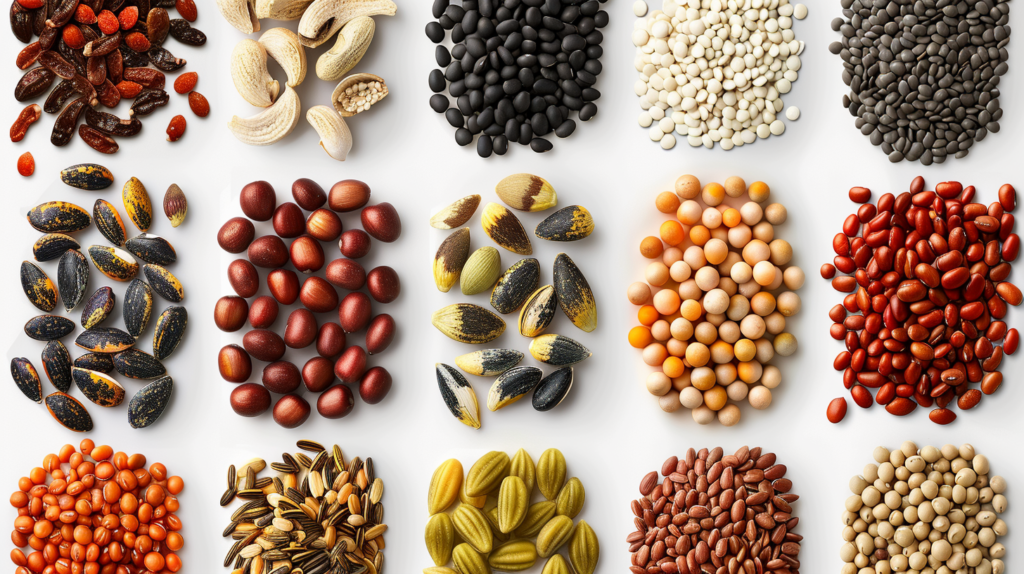
While hydroponic gardening provides numerous benefits, achieving maximum yield depends on choosing the appropriate plants for your system. Different plant varieties have distinct nutrient needs, growth habits, and environmental preferences. Selecting plants that are well-suited for hydroponic cultivation is crucial for maximizing productivity and ensuring a generous harvest. Certain plants naturally thrive in soilless environments, while others may struggle to adapt. Factors such as root structure, nutrient absorption efficiency, and resilience to variations in pH and temperature significantly impact a plant’s compatibility with hydroponics.
By thoroughly researching and selecting plants known to excel in hydroponic systems, you can enhance your chances of achieving bountiful yields. Moreover, considering the specific needs of each plant, such as lighting, spacing, and support structures, is vital for creating an ideal growing environment. By tailoring conditions to the chosen plants, you can unlock their full potential and enjoy the rewards of a successful hydroponic garden.
Top 10 Plants for Hydroponic Gardening
Hydroponic gardening presents a diverse array of opportunities for growing a wide variety of plants. In this segment, we will delve into the top 10 plants that flourish in hydroponic systems, offering valuable guidance to enhance your yield potential and savor abundant harvests.
1. Lettuce
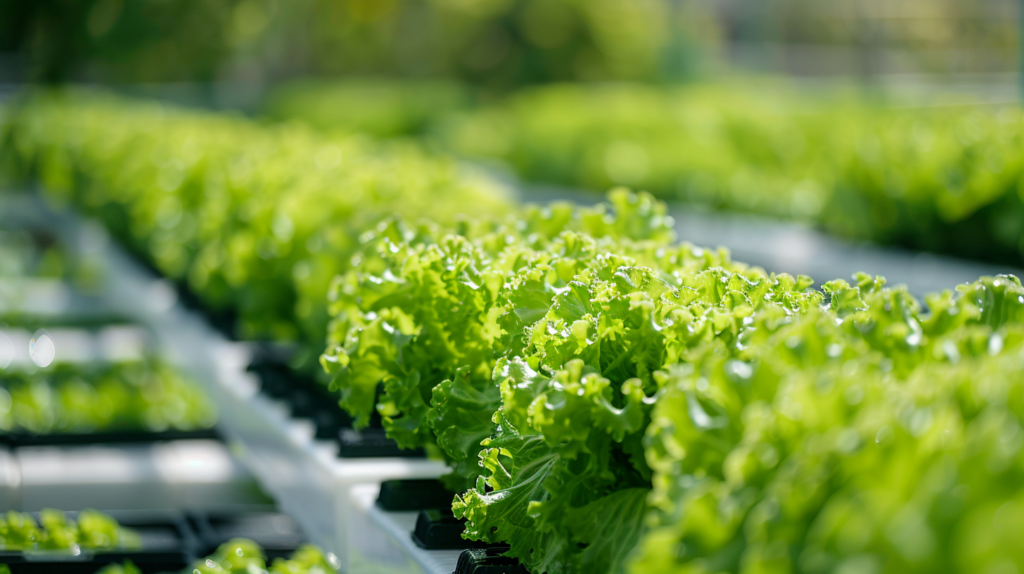
Lettuce stands out as a superb choice for hydroponic gardening, celebrated for its rapid growth and abundant yields. This leafy vegetable flourishes in a well-oxygenated nutrient solution and thrives in cooler temperatures. With its shallow root system, lettuce is perfectly suited for hydroponic setups, facilitating efficient nutrient absorption while reducing the risk of root rot. Whether you fancy crisp romaine, velvety butterhead, or colorful loose-leaf varieties, lettuce adds versatility and nutrition to your hydroponic garden. Its swift maturation ensures a constant harvest of fresh greens for salads, sandwiches, and various culinary delights.
Description, Ideal Growing Conditions, and Yield Potential
Lettuce, a cool-season crop well-suited for hydroponic systems, boasts rapid growth and generous yields. Its shallow root system enables efficient nutrient absorption from the solution, fostering robust growth and robust plants. Optimal conditions for cultivating lettuce hydroponically include temperatures ranging from 60-75°F (15-24°C) and a pH level between 5.5 and 6.5. Adequate lighting, whether from LED grow lights or natural sunlight, is essential for optimal growth and leaf development. Proper plant spacing promotes air circulation, reducing disease risks and supporting healthy growth.
In terms of yield potential, lettuce excels in hydroponic environments. With diligent care, the first harvest can be expected within 3-4 weeks of planting. Depending on the variety and growing conditions, lettuce can yield up to 10-12 crops annually, making it an excellent choice for continuous production. By maintaining optimal nutrient levels, pH balance, and environmental factors, you can maximize the yield potential of your hydroponic lettuce crop.
2. Tomatoes
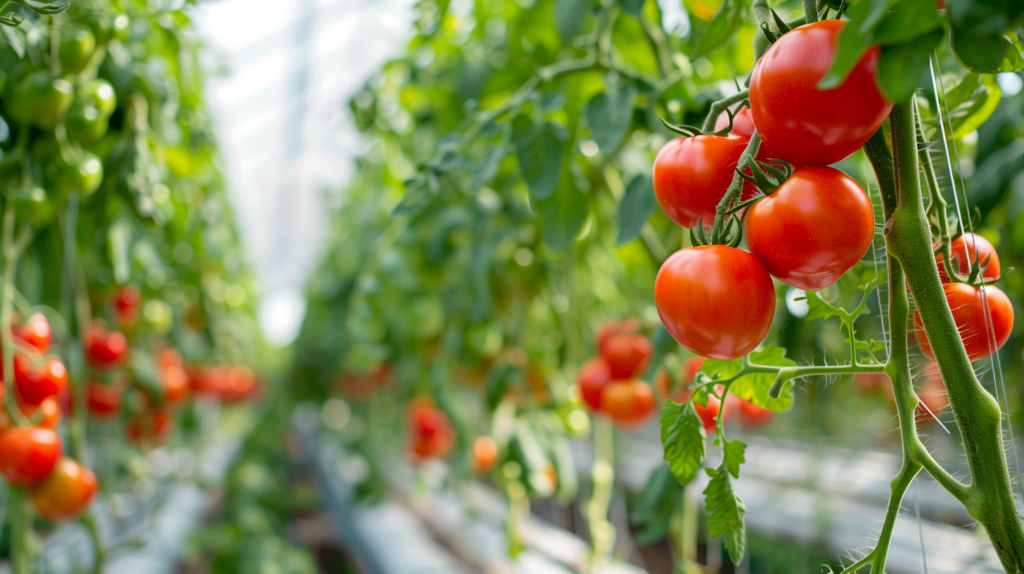
Tomatoes are a widely favored option for hydroponic gardening, yielding a delicious and nutritious harvest. These versatile fruits thrive in a well-balanced nutrient solution and demand ample sunlight and support for their vining growth habit.
Description, Ideal Growing Conditions, and Yield Potential
Tomatoes, a warm-season crop thriving in hydroponic setups, yield an abundance of juicy, flavorful fruits. With their robust growth and impressive yields, tomatoes prove to be a gratifying choice for hydroponic enthusiasts. Optimal growing conditions for tomatoes encompass temperatures ranging from 70-85°F (21-29°C) and a pH level between 5.5 and 6.5. Adequate sunlight or supplemental lighting is crucial for maximizing fruit production. Sturdy support structures like cages or trellises are essential to accommodate the vining growth habit of tomato plants.
In terms of yield potential, tomatoes are prolific producers in hydroponic systems. With proper care, a single plant can yield over 20 pounds (9 kg) of fresh tomatoes throughout the growing season. By maintaining optimal nutrient levels, pH balance, and environmental factors, you can optimize the yield potential of your hydroponic tomato crop. Additionally, employing pruning and training techniques can further boost productivity and enhance fruit quality.
3. Strawberries
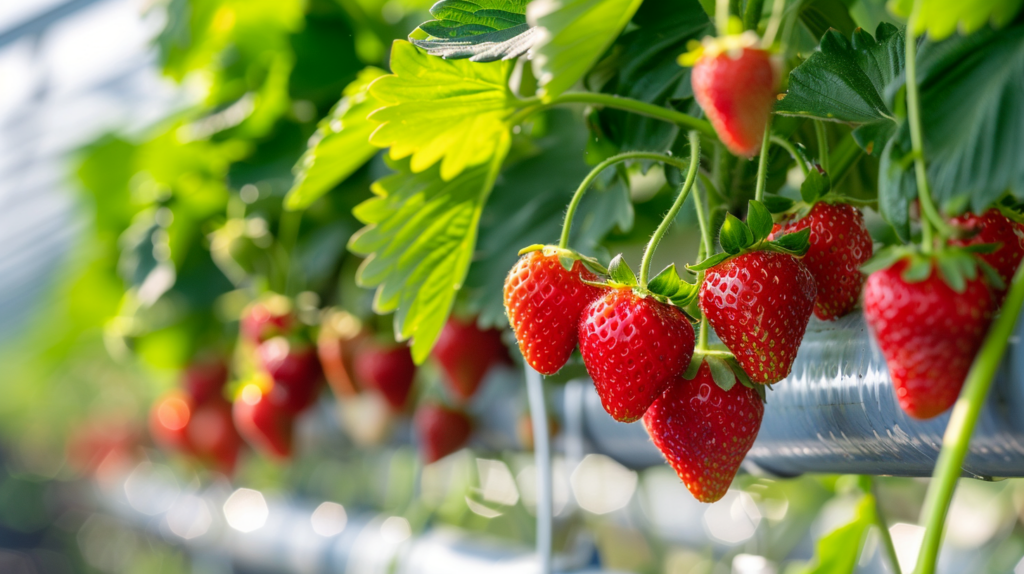
Strawberries are a delightful addition to any hydroponic garden, yielding sweet and juicy berries throughout the growing season. These low-growing plants thrive in a well-aerated nutrient solution and demand ample sunlight for optimal fruit production.
Description, Ideal Growing Conditions, and Yield Potential
Strawberries prove to be a versatile and gratifying choice for hydroponic cultivation, renowned for their sweet and flavorful berries. These perennial plants with a compact growth habit are well-suited for various hydroponic systems. Optimal growing conditions for strawberries encompass temperatures between 65-75°F (18-24°C) and a pH level ranging from 5.5 to 6.5. Adequate sunlight or supplemental lighting is essential for maximizing fruit production and ensuring plant vitality. Good air circulation and proper spacing are beneficial for disease prevention and promoting robust growth in strawberries.
In terms of yield potential, strawberries are prolific producers in hydroponic setups. With proper care, a single plant can yield around 1-2 pounds (0.5-1 kg) of fresh berries per growing season. By maintaining optimal nutrient levels, pH balance, and environmental factors, you can optimize the yield potential of your hydroponic strawberry crop. Implementing techniques like removing runners and providing support can further enhance productivity and fruit quality.
4. Herbs (Basil, Mint, Cilantro)
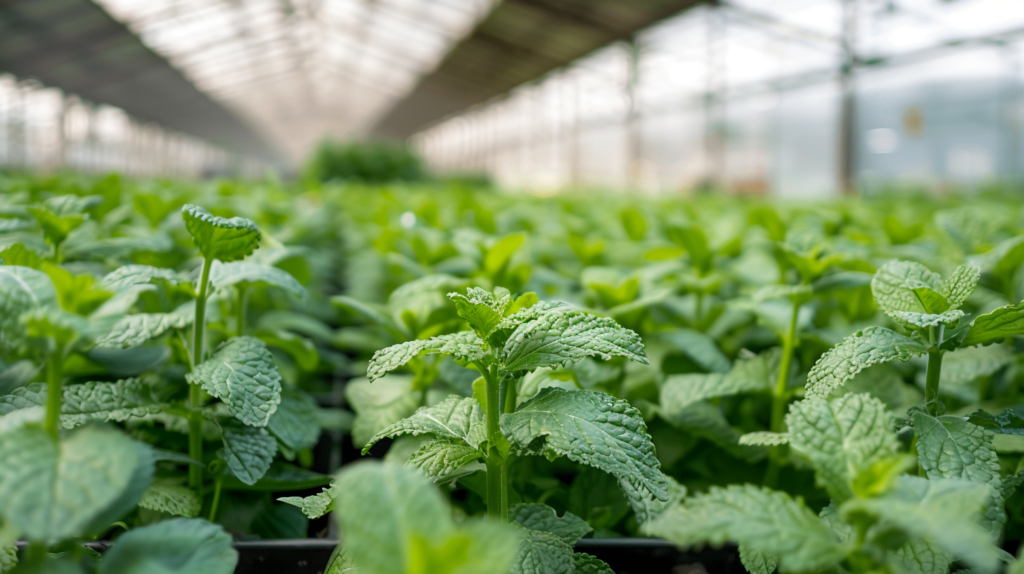
Herbs like basil, mint, and cilantro are exceptional selections for hydroponic gardening, providing a diverse array of culinary and medicinal applications. These fragrant plants flourish in a well-oxygenated nutrient solution and necessitate sufficient lighting for optimal growth. With their swift growth and abundant yields, herbs make a perfect complement to any hydroponic garden.
Description, Ideal Growing Conditions, and Yield Potential
Herbs like basil, mint, and cilantro add versatility and flavor to any hydroponic garden. These aromatic plants are celebrated for their rapid growth and abundant yields, making them an excellent choice for consistent harvesting. Optimal growing conditions for hydroponic herbs include temperatures ranging from 65-75°F (18-24°C) and a pH level between 6.0 and 7.0. Adequate lighting, whether from natural sunlight or supplemental grow lights, is essential for fostering healthy growth and enhancing the production of essential oils that impart herbs with their unique flavors and aromas.
In terms of yield potential, herbs are prolific producers in hydroponic systems. With proper care, you can anticipate harvesting fresh herbs every 2-4 weeks, depending on the herb variety. For instance, basil can yield up to 1 pound (0.5 kg) of fresh leaves per plant per growing season. By maintaining optimal nutrient levels, pH balance, and environmental factors, you can maximize the yield potential of your hydroponic herb garden, ensuring a continuous abundance of fresh, flavorful herbs for your culinary endeavors.
5. Peppers
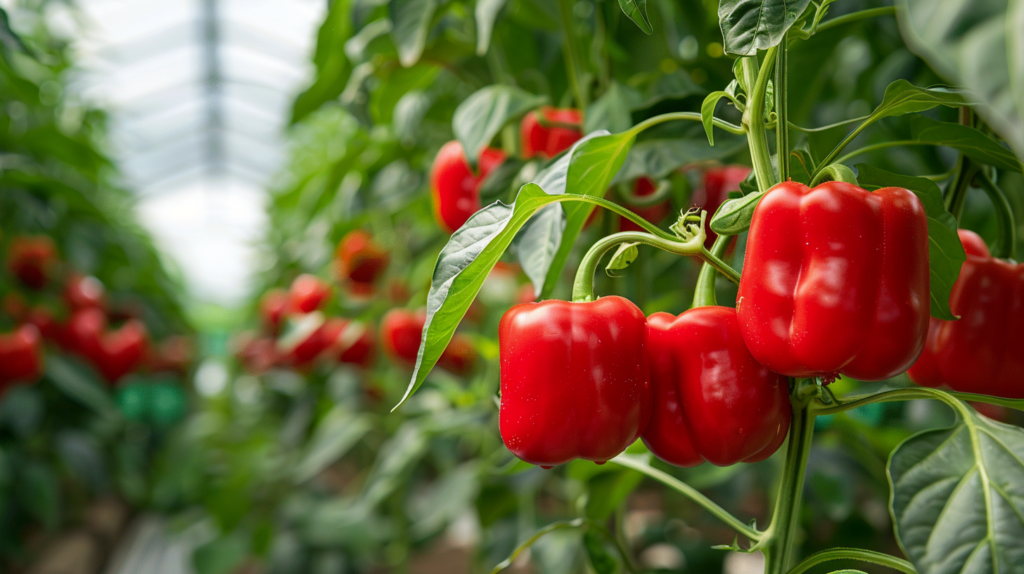
Peppers present a versatile and fulfilling option for hydroponic cultivation, providing a diverse selection of varieties ranging from sweet bell peppers to spicy chili peppers. These warm-season plants flourish in a well-balanced nutrient solution and demand abundant sunlight for optimal fruit production.
Description, Ideal Growing Conditions, and Yield Potential
Peppers offer a diverse and flavorful contribution to any hydroponic garden, encompassing sweet bell peppers to spicy chili varieties. These warm-season crops thrive in a well-balanced nutrient solution and necessitate ample sunlight for optimal fruit production. Optimal growing conditions for peppers in hydroponics include temperatures ranging from 70-85°F (21-29°C) and a pH level between 5.5 and 6.5. Providing sufficient lighting, whether from natural sunlight or supplemental grow lights, is essential for fostering healthy growth and fruit maturation.
Peppers benefit from good air circulation, proper spacing, and disease prevention measures to promote robust plant growth. In terms of yield potential, peppers are prolific producers in hydroponic systems. With proper care, a single plant can yield up to 10-15 pounds (4.5-6.8 kg) of fresh peppers throughout the growing season. By maintaining optimal nutrient levels, pH balance, and environmental factors, you can maximize the yield potential of your hydroponic pepper crop. Implementing techniques like pruning and trellising can further enhance productivity and fruit quality.
6. Cucumbers

Cucumbers prove to be a revitalizing and fulfilling choice for hydroponic cultivation, providing a crunchy and flavorful harvest. These robust plants flourish in a well-oxygenated nutrient solution and demand sufficient lighting and support for their vining growth habit.
Description, Ideal Growing Conditions, and Yield Potential
Cucumbers provide a refreshing and productive contribution to any hydroponic garden, recognized for their crisp texture and versatility in the kitchen. These vining plants exhibit a vigorous growth habit and thrive in a well-oxygenated nutrient solution. Optimal growing conditions for cucumbers in hydroponics encompass temperatures ranging from 65-85°F (18-29°C) and a pH level between 5.5 and 6.5. Providing adequate lighting, either from natural sunlight or supplemental grow lights, is essential for fostering healthy growth and fruit maturation. Cucumbers necessitate sturdy support structures, such as trellises or cages, to accommodate their vining growth habit.
In terms of yield potential, cucumbers are prolific producers in hydroponic systems. With proper care, a single plant can yield approximately 20-30 pounds (9-13.6 kg) of fresh cucumbers throughout the growing season. By maintaining optimal nutrient levels, pH balance, and environmental factors, you can maximize the yield potential of your hydroponic cucumber crop. Implementing techniques like pruning and training can further enhance productivity and fruit quality.
7. Microgreens
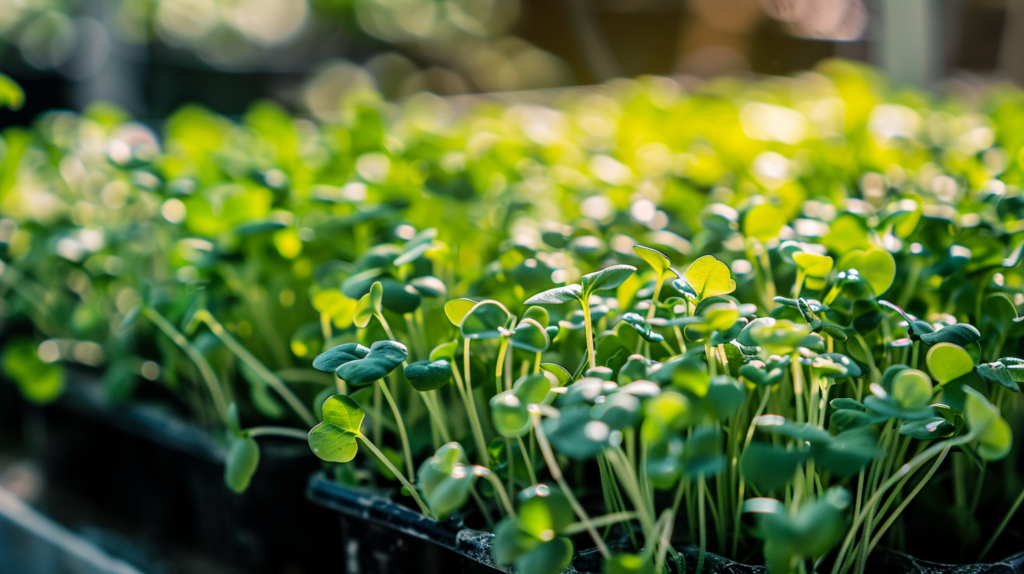
Microgreens represent a nutritious and fashionable inclusion in any hydroponic garden, offering a diverse array of flavors and textures. These miniature plants are harvested shortly after the cotyledon stage, delivering a concentrated burst of flavor and nutrients. Microgreens flourish in a well-oxygenated nutrient solution and necessitate ample lighting for optimal growth. With their swift growth rate and abundant yields, microgreens stand out as an excellent choice for continuous production in hydroponic systems.
Description, Ideal Growing Conditions, and Yield Potential
Microgreens, nutrient-rich greens harvested at the seedling stage, add a burst of flavor and texture to culinary creations. These diminutive plants offer a versatile and fulfilling option for hydroponic gardening, renowned for their rapid growth and generous yields. Optimal growing conditions for microgreens in hydroponics encompass temperatures between 65-75°F (18-24°C) and a pH range of 5.5 to 6.5. Providing sufficient lighting, whether from natural sunlight or supplemental grow lights, is vital for fostering healthy growth and enhancing the flavor and nutrient profile of the microgreens.
Good air circulation, along with proper spacing, is crucial for disease prevention and optimal growth of microgreens. In terms of yield potential, microgreens excel as prolific producers in hydroponic systems. With attentive care, you can anticipate a continuous harvest of fresh microgreens every 7-14 days, depending on the variety. By maintaining optimal nutrient levels, pH balance, and environmental factors, you can maximize the yield potential of your hydroponic microgreen crop, ensuring a steady supply of these nutrient-dense greens for your culinary endeavors.
8. Spinach
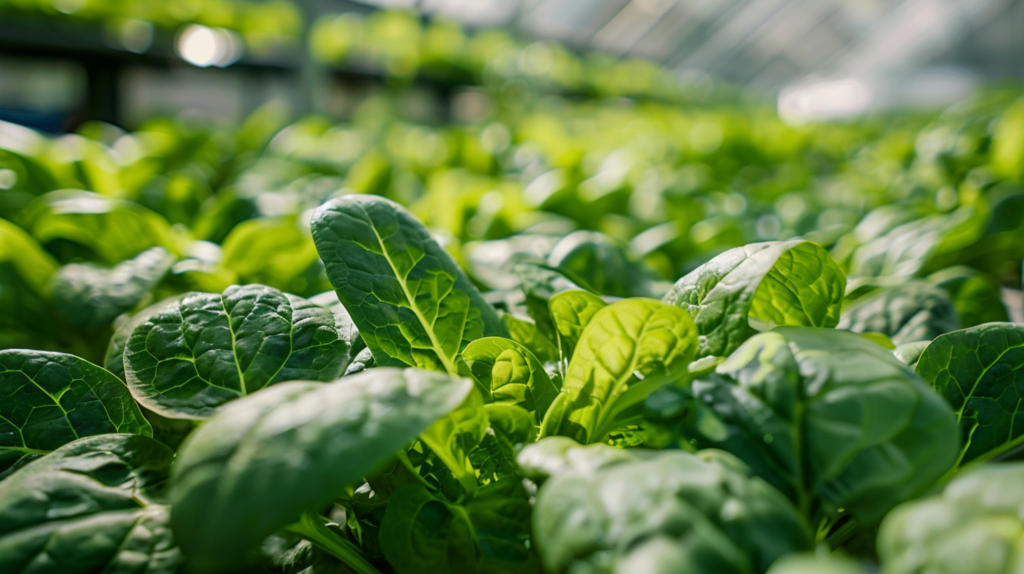
Spinach, a nutritious and adaptable leafy green, thrives in hydroponic environments. This cool-season crop boasts a swift growth rate and generous yields, making it an excellent choice for continuous harvesting in your hydroponic garden.
Description, Ideal Growing Conditions, and Yield Potential
Spinach, a nutrient-dense leafy green popular in hydroponic gardening, thrives in cool-season conditions known for its rapid growth and abundant yields, making it a valuable addition to any soilless cultivation system. Optimal growing conditions for hydroponic spinach encompass temperatures ranging from 60-70°F (15-21°C) and a pH level between 6.0 and 7.0. Providing adequate lighting, whether from natural sunlight or supplemental grow lights, is essential for fostering healthy growth and preventing bolting (premature flowering).
Spinach benefits from good air circulation, proper spacing, and disease prevention measures to promote optimal growth. In terms of yield potential, spinach proves to be a prolific producer in hydroponic systems. With attentive care, you can anticipate harvesting fresh spinach leaves every 3-4 weeks, depending on the variety. By maintaining optimal nutrient levels, pH balance, and environmental factors, you can maximize the yield potential of your hydroponic spinach crop, ensuring a continuous supply of this nutrient-rich leafy green for your culinary creations.
9. Kale

Kale, a nutrient-dense and resilient leafy green, flourishes in hydroponic setups. This cool-season crop delivers a bountiful yield and is celebrated for its culinary versatility, adding significant value to any hydroponic garden.
Description, Ideal Growing Conditions, and Yield Potential
Kale, a nutrient-packed and adaptable addition to any hydroponic garden, demonstrates its resilience in cool conditions and its high yield potential. Optimal growing conditions for hydroponic kale encompass temperatures ranging from 60-70°F (15-21°C) and a pH level between 6.0 and 7.0. Providing sufficient lighting, whether from natural sunlight or supplemental grow lights, is vital for fostering healthy growth and preventing bolting. Kale benefits from good air circulation, proper spacing, and disease prevention measures to promote optimal growth.
In terms of yield potential, kale is a prolific producer in hydroponic systems. With diligent care, you can anticipate harvesting fresh kale leaves every 4-6 weeks, depending on the variety. By maintaining optimal nutrient levels, pH balance, and environmental factors, you can maximize the yield potential of your hydroponic kale crop, ensuring a continuous supply of this nutrient-dense leafy green for your culinary endeavors. Kale’s hardy nature makes it a resilient choice for hydroponic gardening, even in less-than-ideal conditions.
10. Beans
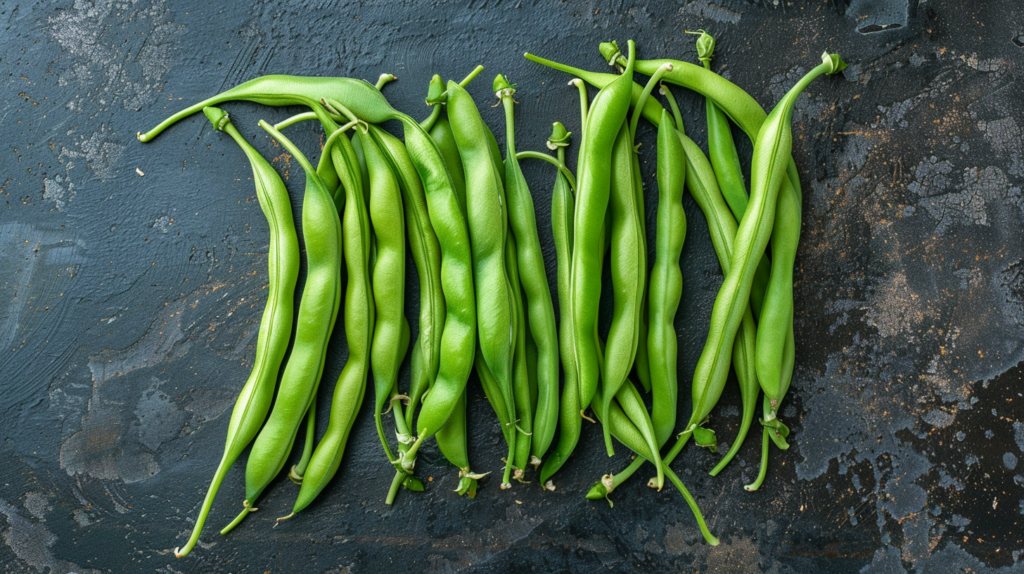
Beans, a nutritious and flavorful inclusion in any hydroponic garden, provide a diverse range of types and tastes. These warm-season plants flourish in a well-balanced nutrient solution and demand abundant sunlight for optimal growth and pod development.
Description, Ideal Growing Conditions, and Yield Potential
Beans are a versatile and nutritious crop that can be successfully cultivated in hydroponic systems. These warm-season plants encompass a range of types, including bush beans, pole beans, and climbing varieties, offering diverse flavors and textures. Optimal growing conditions for beans in hydroponics include temperatures between 70-85°F (21-29°C) and a pH level between 6.0 and 7.0. Providing adequate lighting, whether from natural sunlight or supplemental grow lights, is essential for fostering healthy growth and pod development. Beans benefit from good air circulation, proper spacing, and disease prevention measures to promote optimal growth.
In terms of yield potential, beans are prolific producers in hydroponic systems. With diligent care, a single plant can yield approximately 2-3 pounds (0.9-1.4 kg) of fresh beans throughout the growing season. By maintaining optimal nutrient levels, pH balance, and environmental factors, you can maximize the yield potential of your hydroponic bean crop. Implementing techniques like trellising or caging can further enhance productivity and pod quality.
Factors to Consider for Maximum Yield
For achieving peak yields in your hydroponic garden, it is crucial to take into account various key factors that impact plant growth and productivity. These factors encompass maintaining optimal nutrient levels, ensuring sufficient lighting, regulating temperature and humidity, and employing efficient pest and disease management strategies.
Nutrient Solution and pH Levels
In hydroponic setups, plants depend entirely on the nutrient solution for their vital minerals and nutrients. Ensuring the appropriate balance of these nutrients and the correct pH levels is essential for maximizing plant growth and yield potential. The nutrient solution should consist of a meticulously formulated mix of macronutrients, such as nitrogen, phosphorus, and potassium, as well as micronutrients like iron, calcium, and magnesium. Each plant species has specific nutrient requirements, and it is crucial to customize the solution to meet those needs.
Moreover, monitoring and adjusting the pH levels of the nutrient solution is vital. Most plants thrive in a slightly acidic environment, with a pH range of 5.5 to 6.5 being ideal for most hydroponic crops. Deviations from this range can lead to nutrient lockout, where plants are unable to absorb essential minerals, resulting in stunted growth and reduced yields. Regular testing and adjustments of the nutrient solution and pH levels are necessary to ensure optimal plant health and productivity. Investing in high-quality testing equipment and adhering to recommended guidelines for nutrient replenishment and pH adjustment can help you maintain a balanced and thriving hydroponic system.
Lighting Requirements
Adequate lighting is a crucial factor in achieving maximum yields in hydroponic gardening. Plants rely on light as their primary energy source for photosynthesis, which fuels growth, flowering, and fruit production. Insufficient lighting can result in stunted growth, reduced yields, and even plant death.
In hydroponic systems, growers have the choice of using natural sunlight or artificial grow lights. While natural sunlight is preferable, it may not always be accessible or sufficient, particularly in indoor setups or during specific seasons. In such instances, supplemental lighting from high-intensity discharge (HID) lamps, light-emitting diodes (LEDs), or fluorescent bulbs can provide the necessary light intensity and spectrum for optimal plant growth.
The type of lighting, intensity, and duration of exposure should be customized to the specific needs of the plants being cultivated. Different growth stages, such as seedling, vegetative, and flowering, may necessitate varying light intensities and spectra.
Furthermore, factors like the distance between the lights and the plants, as well as the reflective properties of the growing environment, can influence the effectiveness of the lighting system. Monitoring and adjusting the lighting conditions is vital for maximizing yields in hydroponic gardening. By providing the appropriate amount and quality of light, growers can ensure their plants receive the energy they need to flourish, resulting in abundant and high-quality harvests.
Temperature and Humidity Control
Temperature and humidity regulation are crucial elements in achieving optimal yields in hydroponic gardening. Plants thrive within specific temperature and humidity ranges, and deviations from these ideal conditions can significantly impact their growth, maturity, and overall productivity. Most hydroponic plants prefer temperatures ranging from 65°F to 85°F (18°C to 29°C), with slight variations based on the species and growth phase. Extreme temperatures, whether too high or too low, can stress plants, resulting in stunted growth, diminished yields, and potential plant loss.
Effective temperature control methods include the use of heating or cooling systems, insulation, and ventilation to maintain the desired range. Humidity levels also play a critical role in hydroponic cultivation. Plants generally thrive in a relative humidity range of 40% to 60%. High humidity levels can encourage mold, mildew, and fungal diseases, while low humidity can lead to excessive transpiration, causing wilting and nutrient deficiencies.
Optimal humidity levels can be sustained through the use of humidifiers, dehumidifiers, and appropriate ventilation systems. Monitoring and adjusting temperature and humidity levels are essential for maximizing yields in hydroponic setups. Investing in quality environmental control equipment and implementing effective monitoring and adjustment strategies can help create the perfect growing environment for your plants, fostering robust growth and bountiful harvests.
Pest and Disease Management
Effective pest and disease control is vital for achieving peak yields in hydroponic gardening. Although hydroponic systems are generally less prone to soil-borne pests and diseases, they are not entirely immune to other types of infestations and infections that can rapidly spread and decimate crops if left unchecked. Common pests in hydroponic systems include aphids, whiteflies, spider mites, and fungus gnats. These pests can harm plants by feeding on leaves, stems, and roots, resulting in stunted growth, reduced yields, and potential plant loss.
Adopting an integrated pest management (IPM) strategy, which incorporates preventive measures, monitoring, and targeted interventions, is essential for effective pest control. Diseases such as root rot, powdery mildew, and bacterial infections can also pose a significant threat to hydroponic crops. Implementing proper hygiene, regulating humidity levels, and ensuring adequate air circulation can help prevent the spread of diseases. Utilizing disease-resistant varieties and employing biological control methods, such as introducing beneficial microorganisms, can further bolster disease management efforts.
Regular monitoring and early detection of pests and diseases are crucial for successful management. Growers should routinely inspect their plants and take immediate action at the first signs of infestation or infection. Implementing quarantine procedures, using approved pesticides or biological controls, and maintaining a clean and well-maintained hydroponic system can help minimize the impact of pests and diseases on crop yields.
Conclusion
In conclusion, hydroponic gardening provides a sustainable and efficient approach to cultivate a diverse range of plants. By carefully choosing the appropriate crops, optimizing growing conditions, and implementing effective management strategies, you can maximize your yields and enjoy a continuous supply of fresh produce throughout the year.
Summary of the Top Plants for Hydroponic Gardening
The top plants for hydroponic gardening highlighted in this article present a wide range of possibilities for maximizing your yields. From leafy greens such as lettuce, spinach, and kale to fruiting crops like tomatoes, peppers, and cucumbers, each plant contributes its unique benefits and growing requirements. Herbs such as basil, mint, and cilantro add flavorful and aromatic elements, while microgreens provide a nutrient-dense and rapidly growing option.
Strawberries and beans complete the list, offering sweet and nutritious harvests. By carefully selecting the plants that best align with your hydroponic setup and preferences, you can cultivate a thriving and productive garden tailored to your specific needs.
Encouragement to Experiment and Discover the Best Plants for Your Setup
Although this article has presented the top plants for hydroponic gardening, it is essential to remember that each setup is distinct. Take advantage of the opportunity to experiment and discover the plants that flourish best in your specific hydroponic system. Don’t hesitate to explore new varieties or unconventional crops – the versatility of hydroponic gardening allows for endless possibilities.
With patience, meticulous attention to detail, and a readiness to learn, you can unlock the full potential of your hydroponic garden and uncover the ideal combination of plants that yield abundant, high-quality harvests tailored to your preferences.

